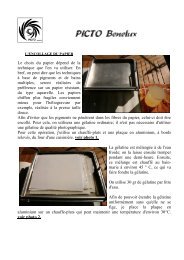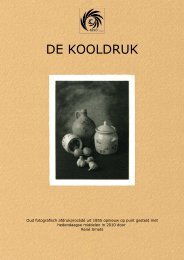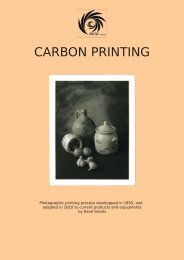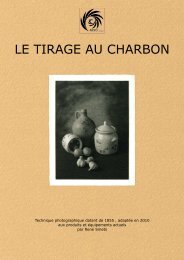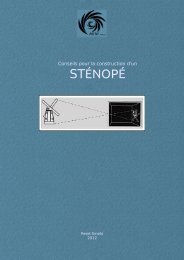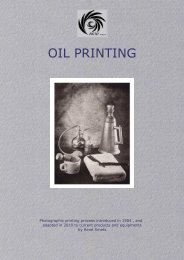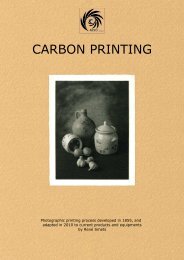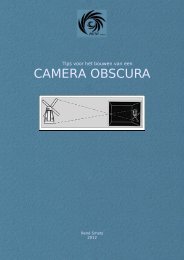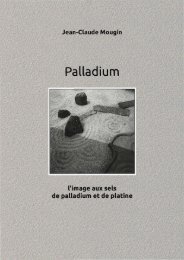Jean-Claude Mougin (pdf) - Picto Benelux
Jean-Claude Mougin (pdf) - Picto Benelux
Jean-Claude Mougin (pdf) - Picto Benelux
You also want an ePaper? Increase the reach of your titles
YUMPU automatically turns print PDFs into web optimized ePapers that Google loves.
• Allow the mixture to settle for at least 4 hours in the tubes. The ferric<br />
oxalate starts to decant as an emerald green liquid, clearly separated from<br />
the iron that wasn’t reduced by the acid.<br />
• Filter the iron oxalate through a funnel having its tip filled with cotton<br />
wool. The Büchner vacuum pump can be reused here to speed up filtering.<br />
• Repeat the filtering several times if necessary, until you get a perfectly<br />
clear liquid.<br />
3.3 Determining the ferric oxalate concentration<br />
The percentage can be read on the specific gravity chart printed below.<br />
This chart shows for example that a gravity coefficient of 1.17 corresponds to a<br />
27 % concentration. The simplest way of measuring this concentration is to use an<br />
hydrometer. A 24 % instead of a 27% concentration will not show any real<br />
difference in the resulting print.<br />
Another way of proceeding is to weigh the same volumes of water and of ferric<br />
oxalate: the ratio between both results has to be 1.174.<br />
When getting a density higher than 1.17, add water. When getting a density lower<br />
than 1.15, as the ferric oxalate cannot be heated without damage, the whole<br />
procedure has to be started over again, and more water has to be extracted in<br />
order to get a less humid iron hydrate.<br />
39



